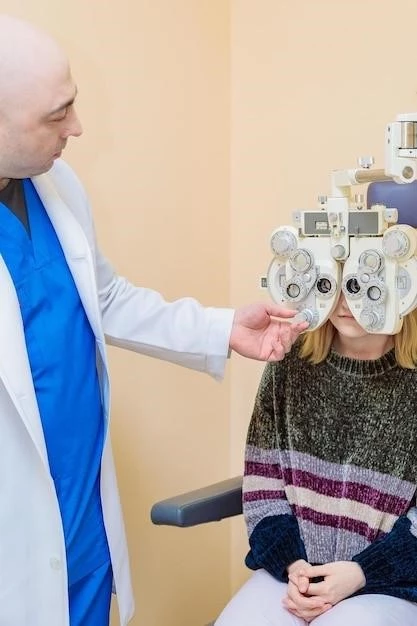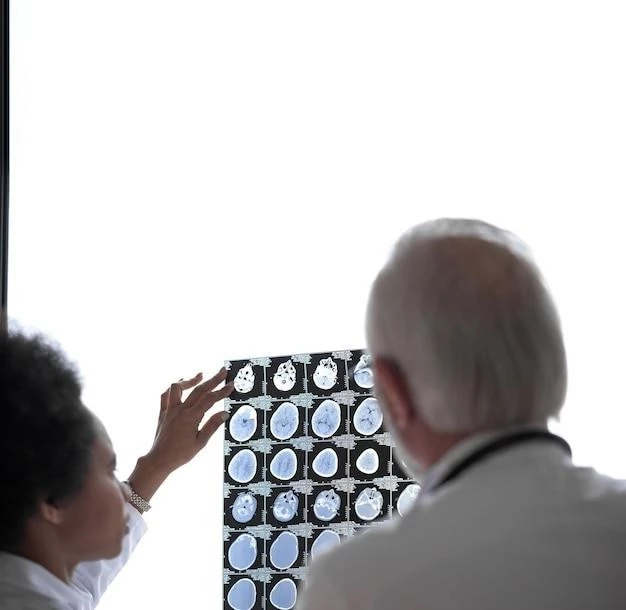Overview of Oculomotor Nerve Palsy
Oculomotor nerve palsy or oculomotor neuropathy is an eye condition resulting from damage to the third cranial nerve or a branch thereof. As the name suggests‚ the oculomotor nerve supplies the majority of the muscles controlling eye movements (four of the six extraocular muscles‚ excluding only the lateral rectus and superior oblique). Damage to this nerve will result in an inability to move. . .
Definition and Causes
Oculomotor nerve palsy‚ also known as oculomotor neuropathy‚ is a condition characterized by damage to the third cranial nerve or its branches. This crucial nerve is responsible for controlling the majority of eye movements. The primary causes of oculomotor nerve palsy include microvascular diseases like diabetes and hypertension‚ compression from intracranial neoplasms or aneurysms‚ trauma‚ or inadequate blood flow to the nerve.
Symptoms and Diagnosis
Patients with oculomotor nerve palsy may experience a range of symptoms including double vision‚ drooping eyelids‚ and difficulty moving the affected eye. Diagnosis often involves a comprehensive eye exam to assess eye movements‚ pupil reactions‚ and visual acuity. Imaging studies like MRI or CT scans may be used to identify the underlying cause of the palsy‚ which can include microvascular diseases‚ trauma‚ or compressive lesions affecting the nerve.
Neuroanatomy of the Oculomotor Nerve
The oculomotor nerve‚ also known as the third cranial nerve‚ controls several crucial eye movements and plays a significant role in maintaining visual function. Damage to this nerve can lead to various eye movement impairments and visual disturbances.
Structure and Function
The oculomotor nerve‚ also known as cranial nerve III‚ plays a crucial role in controlling most eye movements. It innervates multiple extraocular muscles responsible for eye movements and regulates the size of the pupil. The nerve comprises somatic motor fibers that control voluntary eye movements and parasympathetic fibers that manage pupillary constriction. Dysfunction of the oculomotor nerve can lead to a range of visual impairments.
Vulnerability and Common Conditions Affecting the Nerve
The susceptibility of the oculomotor nerve to various conditions stems from its intricate anatomical path and function. This nerve can be impacted by microvascular diseases like diabetes and hypertension‚ compression from intracranial neoplasms or aneurysms‚ traumatic injury‚ or ischemic events. Understanding the vulnerabilities and potential conditions affecting the oculomotor nerve is crucial in diagnosing and managing oculomotor nerve palsy.
Clinical Manifestations of Oculomotor Nerve Palsy
Patients with oculomotor nerve palsy may experience various symptoms related to eye movement impairment‚ such as double vision‚ drooping eyelids‚ and restricted eye movements. Diagnosing these manifestations requires a thorough evaluation of eye movements and visual function.
Presentation in Adults vs. Children
The clinical presentation of third nerve palsy differs between adults and children. While adults commonly experience symptoms like double vision and drooping eyelids due to oculomotor nerve dysfunction‚ children may exhibit other causes of diplopia‚ ptosis‚ and anisocoria. Understanding these distinctions is essential for accurate diagnosis and appropriate management of oculomotor nerve palsy in both age groups.
Varied Symptoms and Associated Conditions
Oculomotor nerve palsy presents with a range of symptoms‚ including double vision‚ drooping eyelids‚ and limited eye movements. Various conditions‚ such as diabetes‚ hypertension‚ and intracranial neoplasms‚ can lead to this condition by affecting the oculomotor nerve. Understanding the diverse symptoms and associated conditions is vital for proper diagnosis and effective management of oculomotor nerve palsy.

Treatment Options for Oculomotor Nerve Palsy
Conservative management approaches are often employed to address oculomotor nerve palsy‚ while surgical interventions and vision therapy may be considered in more severe cases for potential improvement of eye movements and associated symptoms. The choice of treatment depends on the underlying cause and severity of the nerve dysfunction.
Conservative Management Approaches
Conservative management strategies are commonly employed in the treatment of oculomotor nerve palsy. These approaches may include prism glasses‚ patching therapy‚ and eye exercises aimed at improving coordination and muscle function. Additionally‚ medication for symptom relief and regular monitoring are essential components of conservative management for oculomotor nerve palsy.
Surgical Interventions and Vision Therapy
Severe cases of oculomotor nerve palsy may require surgical interventions to address the underlying cause or to correct muscle imbalances affecting eye movements. Vision therapy‚ including exercises and techniques to enhance eye coordination and strengthen muscles‚ can complement surgical approaches in improving visual function for individuals with oculomotor nerve palsy.

Complications and Prognosis
Potential long-term effects of oculomotor nerve palsy may include persistent visual disturbances‚ compromised eye coordination‚ and challenges with daily activities. Understanding the prognosis and potential complications associated with this condition is essential for effective management and treatment outcomes.
Potential Long-Term Effects
Long-term effects of oculomotor nerve palsy can include persistent visual disturbances‚ compromised eye coordination‚ and challenges in daily activities. Understanding these potential long-term effects is crucial for providing appropriate care and support to individuals affected by this condition.
Recovery Rates and Outcomes
Recovery rates and outcomes for oculomotor nerve palsy can vary depending on the underlying cause and severity of the condition. In many cases‚ individuals may experience partial or full recovery within a few months. Treatment options such as surgical interventions and vision therapy can significantly impact recovery rates and improve long-term outcomes for individuals with oculomotor nerve palsy.
Research Advances and Future Directions
Current studies on oculomotor nerve palsy focus on understanding the underlying mechanisms of nerve damage‚ exploring novel treatment approaches‚ and investigating emerging technologies such as neural regeneration therapies. The future direction of research aims to improve diagnostic precision‚ enhance therapeutic outcomes‚ and develop innovative interventions to optimize recovery for individuals with oculomotor nerve palsy.
Current Studies on Oculomotor Nerve Palsy
Research on oculomotor nerve palsy aims to enhance understanding of underlying mechanisms‚ develop novel treatments‚ and explore emerging technologies for neural regeneration. Studies focus on improving diagnostic accuracy‚ optimizing therapy outcomes‚ and advancing interventions to promote recovery in individuals with this condition.
Emerging Technologies and Therapies
Emerging technologies and therapies in the field of oculomotor nerve palsy aim to revolutionize treatment approaches and management strategies. From cutting-edge neural regeneration techniques to innovative vision therapy modalities‚ these advancements show promising potential in enhancing recovery outcomes and quality of life for individuals affected by oculomotor nerve palsy.
